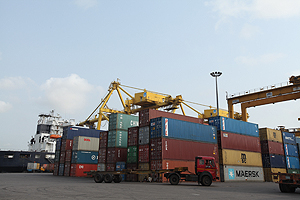 This is the first question I have met across at the ADBI seminar on APEC on January 28th. Of course they have not. Nobody raised this within APEC, because APEC is a non-binding organization. But so long as APEC sticks in its weak modality, it may get left behind mushrooming FTAs. What is the APEC’s raison d’etre nowadays?
This is the first question I have met across at the ADBI seminar on APEC on January 28th. Of course they have not. Nobody raised this within APEC, because APEC is a non-binding organization. But so long as APEC sticks in its weak modality, it may get left behind mushrooming FTAs. What is the APEC’s raison d’etre nowadays?
Established in 1989, APEC seeks to promote trade and economic cooperation in the Asia and Pacific region. In 1994 in Bogor, Indonesia, APEC leaders pledged to achieve free and open trade and investment in the Asia and Pacific region by 2010 for developed members and by 2020 for developing economies. These targets became known as the “Bogor Goals.” This effort has brought global attention to the high growth potential of the Asia and Pacific region. APEC members started their liberalization process in 1997 under individual action plans (IAPs).
In 2010, APEC conducted a mid-term assessment of the efforts of 13 APEC economies in achieving the Bogor Goals. It found that the 13 economies—the five industrialized economies and eight developing economies that volunteered to be part of the exercise—had“ some way to go to achieve free and open trade in the region.”APEC leaders pointed to remaining impediments and renewed APEC’s commitment for all 21 member economies to continue their IAP process to achieve the Bogor Goals by2020. Thus all 21 economies have submitted IAPs and a new IAP review process started in 2012.
APEC economies have reduced average tariffs to 5.4%, improved foreign direct investment regimes, and made good progress in facilitation areas. This helped the region to achieve high levels of growth in the first decade of the century. Higher tariffs in agriculture and heavy manufacturing have remained because of the stalled Doha round of WTO negotiations. Nevertheless, we have to monitor closely this new IAP process and to encourage senior officials to implement as much liberalization and facilitation as possible towards the final goals in 2020. This was the main message of my presentation at an ADBI seminar The Next Steps for APEC: An Assessment and Way Forward in January 2013.
The Trans-Pacific Partnership (TPP), the Regional Comprehensive Economic Partnership (RCEP), and the China-Japan-Korea Trilateral Free Trade Agreement (CJK FTA) are the leading FTAs in East Asia. These FTAs currently being negotiated will take a few years to conclude. The TPP will be a broad, high-level FTA, while the RCEP and CJK FTA will focus on commodities and moderate liberalization. Membership of these FTAs will be partly duplicated and partly exclusive so rivalry and conflict may arise.
Conversely, APEC has gained great experience in liberalization and facilitation toward achieving the 2020 Bogor Goals. APEC’s coverage equals that of TPP. And it has benefitted from its economic and technical cooperation activities, which help developing economies to build the capacity needed for liberalization and facilitation. APEC includes almost all members of the three FTAs—with the exception of Cambodia, India, Lao PDR, and Myanmar, which are RCEP members—and is free from rivalry and conflict. While the TPP, the RCEP, and the CJK FTA will pull Asian regional economic integration from above, APEC is pushing from behind. In this sense we propose to push APEC forward in parallel with the three FTAs.
Changing APEC’s non-binding modality would be difficult. Asian economies, such as the People’s Republic of China, Indonesia, and the Philippines would fiercely oppose such a change, which would hurt efforts toward achieving the Bogor Goals. But many APEC stakeholders would like to balance the advantages of this approach against its constraints to liberalization. Facilitation and regulatory reform work best once member governments are convinced of their usefulness. The APEC Business Advisory Council (ABAC) has proposed quite a few programs of this kind and APEC has implemented many of them. The Trade Facilitation Action Plan (since 2002) and Leaders’ Agenda to Implement Structural Reform (since 2004) are prominent examples.
In a broader perspective, APEC’s role has expanded to the building of a free market economy in the Asia and Pacific region so that all members can enjoy the benefit of globalization. In 2000 in Brunei Darussalam, APEC leaders declared that no APEC economy should be left behind as a result of the digital divide. E-commerce is a fast-growing industry among APEC economies and protection of personal information is crucial. APEC’s new Cross-Border Privacy Framework is a voluntary initiative to enhance electronic commerce, facilitate trade, and strengthen consumer privacy protections. However, binding agreements are not possible in these new areas. This will continue to be the raison d’être of APEC beyond 2020.
_____
References:
APEC. 2010. The Report on APEC’s 2010 Economies’ Progress Towards the Bogor Goals. Singapore
Atsumi, T., H. Ishido, I. Yamazawa. 2012. APEC’s New IAP Process: How Can we Strengthen it toward the Bogor Goals in 2020. APEC Study Center Japan.







Comments are closed.